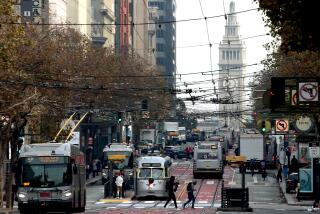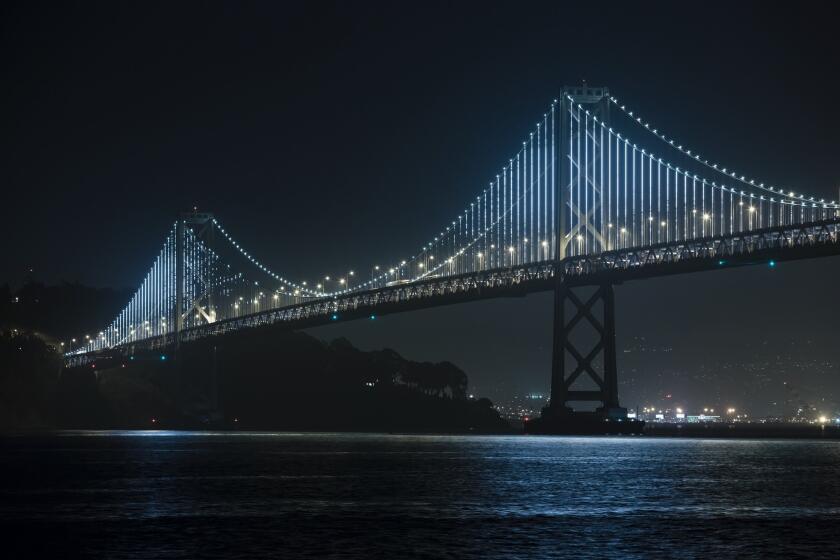California’s downtowns were emptied by COVID: S.F. still reeling but San Diego rebounds
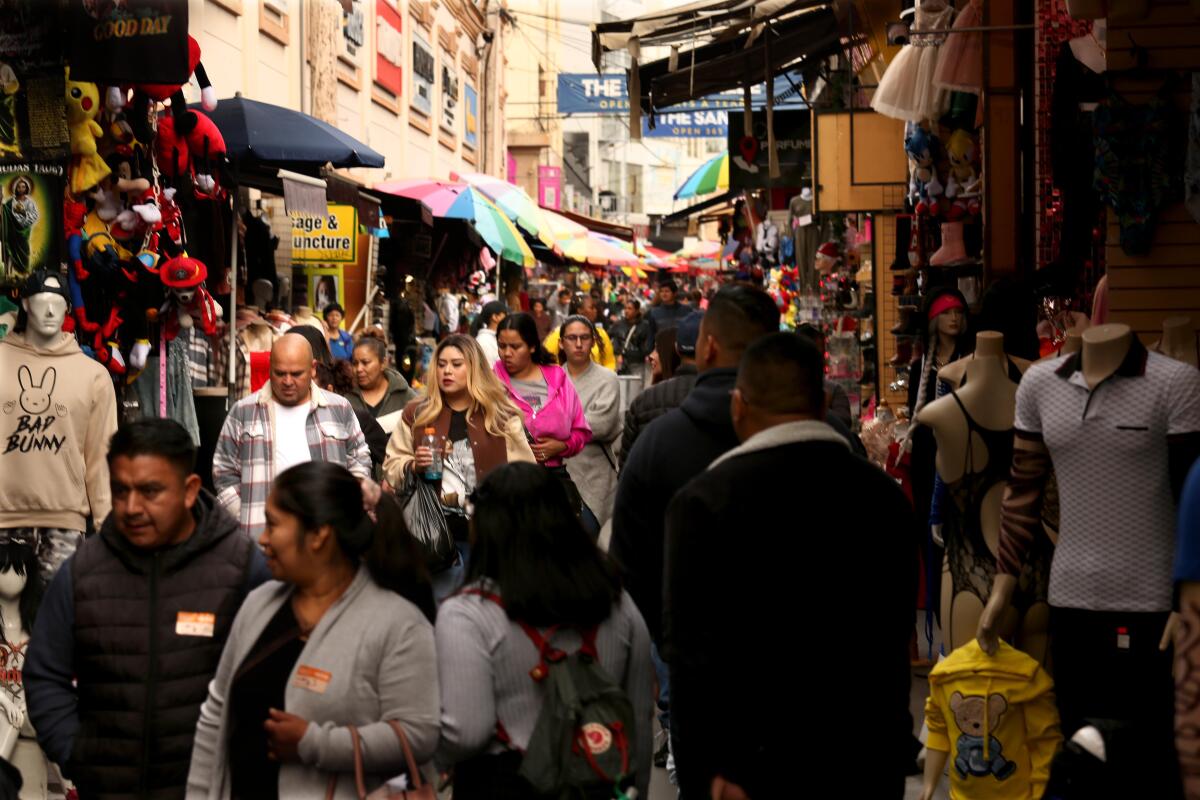
One of the biggest questions facing California‘s largest cities in the last few years has been how their downtowns will rebound from the pandemic.
Early indications show that some regions are recovering much more quickly than others. And the stakes couldn’t be higher, as leaders and officials race to lure workers and tourists back to cities’ economic centers.
San Diego has bounced back to 99% of previous foot traffic levels while Los Angeles is at 65%, according to a study by the School of Cities at the University of Toronto that recorded foot traffic based on cellphone data in 62 North American cities from 2019 to November 2022. San Francisco remained at only 31% of pre-pandemic levels.
Each of California’s largest downtowns has rebounded differently. San Diego was more reliant on tourism and residential development, which helped its recovery. San Francisco, on the other hand, was far more dependent on office workers and has suffered from companies shifting to remote work. The lack of commuter traffic has also devastated that downtown’s retail life. San Francisco leaders have been working to turn things around and prevent what some experts have described as a potential “doom loop.”
“There is tremendous diversity in who’s coming back,” said Karen Chapple, a professor emerita of city and regional planning at UC Berkeley and director at the School of Cities.
San Diego

On a Thursday night in Little Italy in downtown San Diego, the restaurants along India Street were buzzing. Tables at Buon Appetito and Barbusa were filled with diners, giddy from the reprieve of California’s wild wintry weather. Tourists strolled the sidewalks, illuminated by string lights overhead. Across town in the historic streets of the Gaslamp quarter, dozens of customers queued up to order ice cream cones and cups from Cali Cream. A few blocks away, fans formed a line outside the American Comedy Club to see Kevin Fredericks’ show, the latest leg of his national tour.
Downtown San Diego is whirling again, a place that was in a developmental sprint until 2020 momentarily slowed it down. “San Diego has an unusually large and diverse set of activities, which I think is part of what’s leading the way,” said Bill Fulton, an urban planner and San Diego’s former planning director.
Though San Diego’s downtown is less office-centric, it was still decimated by the dramatic retraction of its bedrock leisure and hospitality industries — about 9,840 jobs were lost in 2020, wiping out four years of job growth, according to the Downtown San Diego Partnership.
But tourism, especially domestic travel, returned with gusto in 2021. Conventions, particularly Comic-Con, came back to town. Sheyla Ulloa, an assistant manager of the Gaslamp Garage, a souvenir shop, stood in the store one day as lanyard-wearing conventioneers scooped up gifts. The return of conventions was a special turning point. “That was when I felt we are getting back on track,” Ulloa, 35, said.
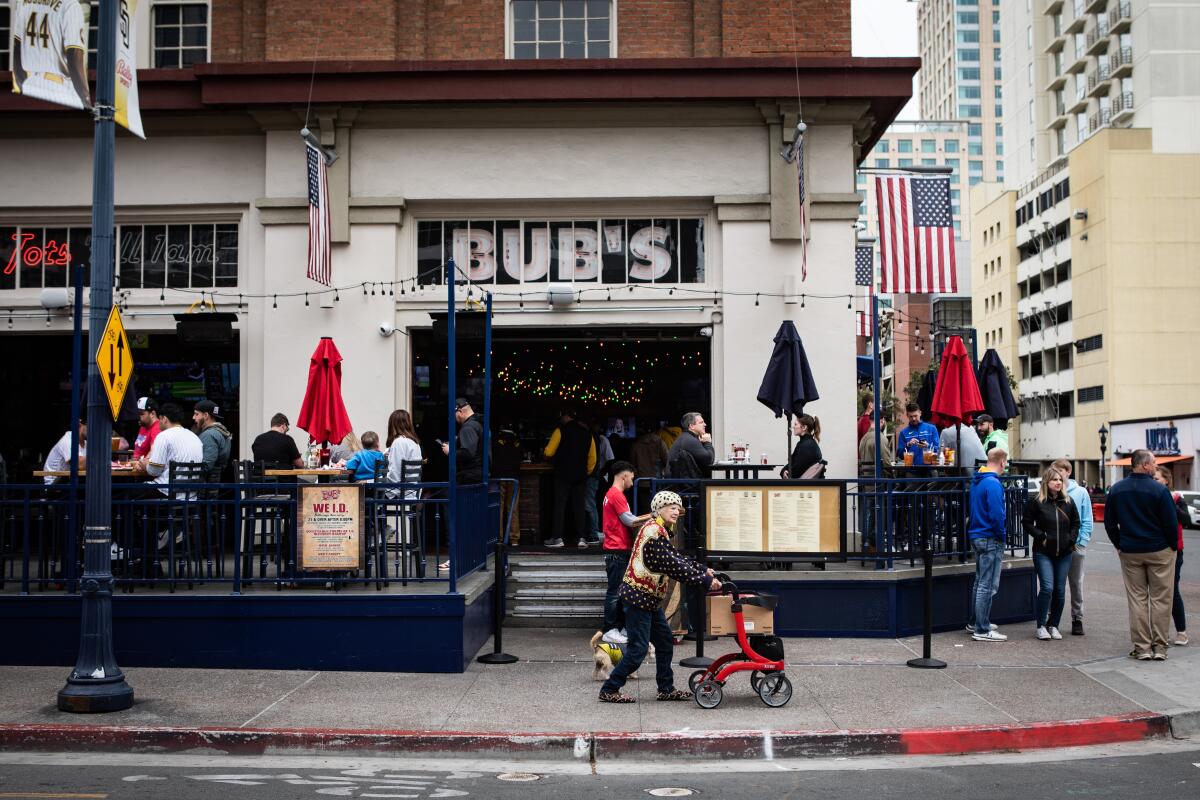
Leaders credit recovery to other areas, too. “We have also seen the diversification of these new industries into downtown San Diego,” Betsy Brennan, the director of Downtown San Diego Partnership, said, noting the emerging biotechnology industry.
According to CoStar, a real-estate tracking company, about 2.8 million square feet of newly developed mixed-used space is slated to open over the next two years, the biggest stock of inventory in two decades. It includes the $550-million transformation of Westfield Horton Plaza into a mixed-used life science and technology center, and real-estate developer IQHQ’s research and development center, or RaDD, which comprises offices, laboratories and retail space on the waterfront. Neither of the spaces has announced any tenants yet, CoStar analysts said.
Downtown San Diego residents have also kept things in motion. “I love downtown,” Logan DeBuano, who lives and owns a salon in the area. “It’s the simplicity of being able to walk everywhere, and having things so close.”
But the pandemic still casts a shadow. Storefronts remain boarded up, and the number of homeless people in downtown has hit a record high, as home prices across the county soar and pandemic protections expire. Some residents in the area say the quality of life has declined.
Ariana Sadre walked from her downtown apartment to a 10:30 a.m. yoga class in the East Village, navigating streets lined with encampments and littered with rubbish during her 10-block route. Sadre, 31, said she has started to see open drug use, needles on the ground and people with gaping wounds.
“I feel for people, and it upsets me that we don’t have solutions in place,” she said. “But it’s crazy, because we keep building these high-rises and charging astronomical rent, and there are these massive problems that aren’t being addressed.” (The city has added more shelter beds, and the City Council is looking at a proposed ban on encampments on public property, but the crisis has not been fully solved.)
In the Columbia District, Allyson Samfilippo, co-owner of Kuma Cafe, which caters largely to downtown’s office workers, has had to raise prices and switch to leaner operations. Customers have told her their businesses are relocating. The climate feels different now, she said. “I was 25 when we started this and was ready to go,” said Samfilippo, who opened Kuma in 2016 with her husband. “Now I’m just looking around to see where the chips are going to fall.” She does see promise: Vacancy signs are coming down as new businesses move in.
“I hope that we will find a way to keep making it,” she said.
Los Angeles

One recent Tuesday morning, office workers dodged puddles and hid under umbrellas, stopping to pick up almond lattes and scones at Nice Coffee, an open air cafe in City National Plaza. Rain lashed the plaza’s skyscrapers, their neat rows of office windows stacked one atop the other, revealing mostly empty rooms under glaring white lights.
Downtown Los Angeles relies in part on the spending of employees who fill the skyscrapers in the city’s core. But office occupancy rates are at 47% of pre-pandemic levels, and rental rates are below 2019 levels.
The spike in remote work is short-term pain, said Nick Griffin, executive director of the Downtown Center Business Improvement District. He remains “bullish” on downtown Los Angeles’ ability to absorb those changes. “Hospitality, residential and to some extent retail [are] all recovering quickly and picking up the slack, and are likely taking a more prominent role in the shape of downtown going forward,” Griffin said.
Before the pandemic struck, downtown L.A. was ascending. Since the late 1990s, a watershed of residential units helped the population balloon from 20,000 to more than 85,000. It became a tourism magnet. Celebrity chefs opened restaurants and bars. The Arts District oozed with popularity and coolness.
“Downtown Los Angeles was booming,” resident James Lee said as he played with his dog, Buster, a 13-year-old terrier mix, in a mud-covered park in the Historic Core. The restaurants, the culture and walkability gave downtown its own vibe. “Then COVID kneecapped it.”
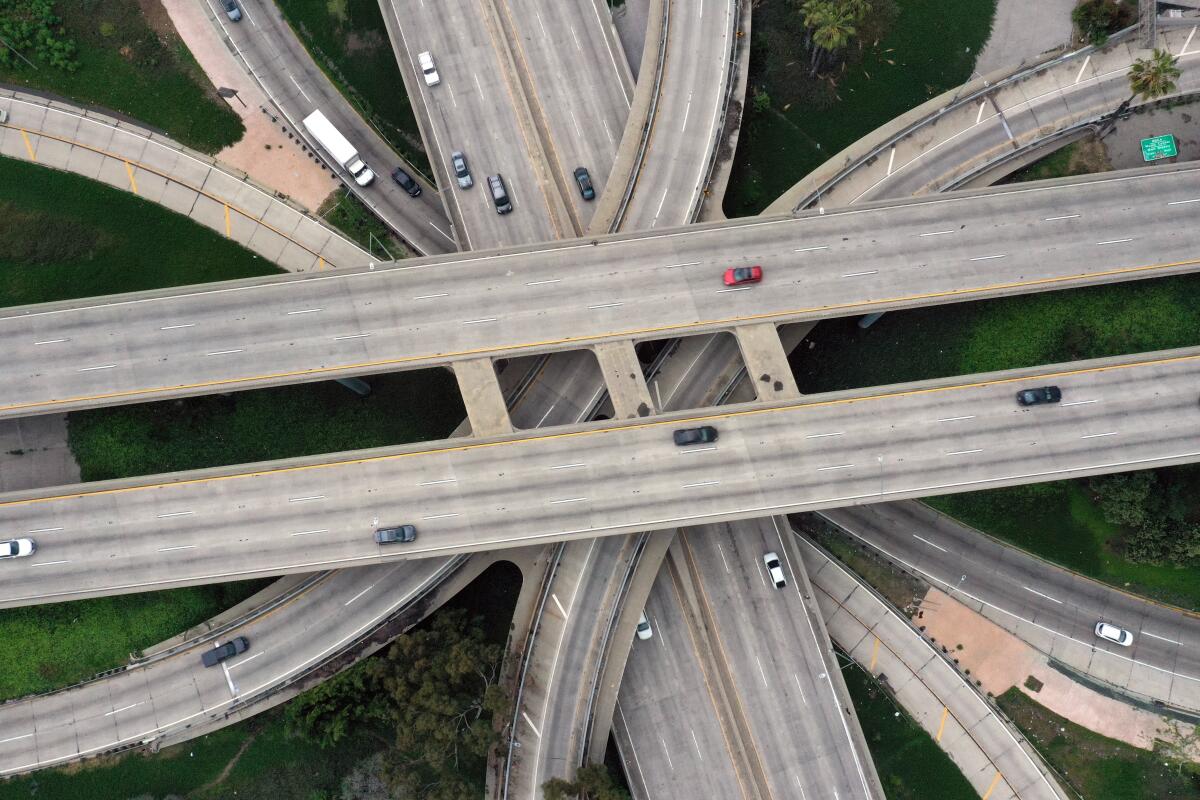
Trips to downtown L.A. fell from an average of 10 million monthly visits in 2019 to 2 million in April 2020, according to the Downtown Center Business Improvement District’s 2022 year-end report. Workplace visits dropped from 5.4 million average visits in 2019 to as low as 2.4 million visits. But 2022 saw meaningful and stable advancements; average monthly visits are now around 10% below the pre-pandemic average, the report found.
Many storefronts remain shuttered, and residents, employees and business owners point to the growing homelessness emergency that they say has gotten worse. At Wax Candy, a salon, manager Yaso Pacheco keeps the front door locked and buzzes clients in — a security measure introduced only recently after several unsettling interactions left employees rattled. Other workers and residents say certain streets are impassable, particularly after dark when leaving work.
But some familiar rhythms are reemerging. At the Golden Gopher, a neighborhood bar, managers said the energy during St. Patrick’s Day weekend was reminiscent of previous times: loud, crowded, hectic. Lee said he sees architecture and food tours on the move and more people exploring the steep streets of Bunker Hill, while other residents point to reopened galleries and tourists taking selfies in front of Disney Concert Hall. A slate of high-rise hotels, including the Conrad, inside Frank Gehry’s megacomplex the Grand, and the Moxy and AC complex are adding clout to downtown L.A. “It feels like it’s recovering,” said Carrin Tanaka, 36, a freelance music composer who lives in the area.
For some entrepreneurs, the pandemic crystallized new opportunities. Elliott Lau, the owner of Nice Cafe, applied for a liquor license last year, largely encouraged by busier sidewalks, offices and summer’s contagious energy. Lydia Clarke moved downtown in 2012 to open DTLA Cheese in Grand Central Market. She loved operating in the market but began exploring other locations. Then, the store beside Kippered, a bar Clarke also owns, went on the market, about 500 feet from Grand Central.
“When will you find a corner vacancy, right next to your other business?” Clarke, 45, said. “It feels like a nice time to [move]. Wheels are starting to not just be moving, but they’re getting greased up again.”
San Francisco
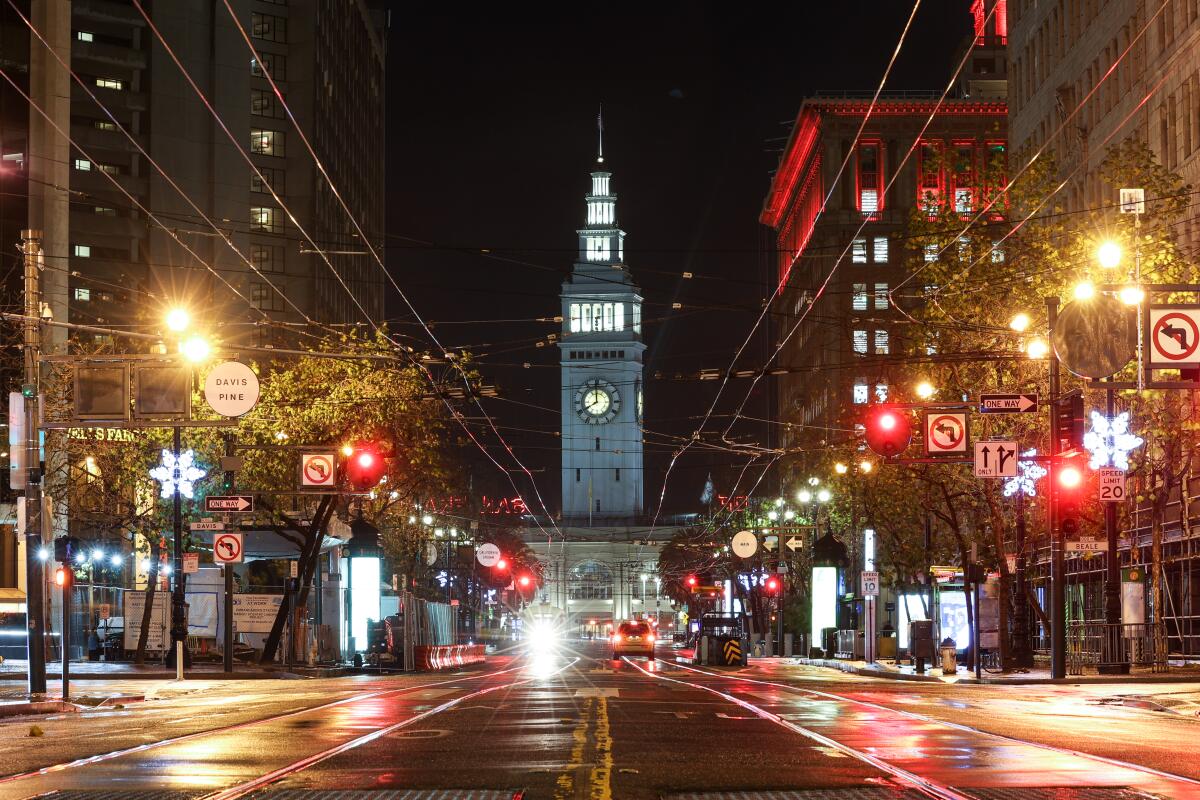
About 10 people lined up inside Le Regency Deli & Cafe in downtown San Francisco — a mix of law firm employees, construction workers, project managers, conventioneers and municipal staffers. A man in a uniform for BART, the city’s transit service, remarked to the deli’s owner, Paul Ayanian, how good it felt to see other customers. Trolley bells chimed on an otherwise empty street outside. It was three years to the day that Bay Area counties, including San Francisco, issued pandemic shutdown orders.
“Before we’d have a line out the door at lunch time,” Ayanian, 68, said. He and two employees — down from a staff of seven pre-pandemic — assembled wraps, salads and panini sandwiches.
San Francisco has earned a reputation as America’s emptiest downtown, exacerbated by the shift to remote work and massive layoffs, led by the behemoth tech industry. The city’s office vacancy rate hit a record high of 29.4% in the first quarter of 2023, up from 19.7% from the first quarter of 2022, according to data from the real-estate brokerage firm CBRE. Its office occupancy rate has stalled and hangs around 40% weekly, among the lowest in the nation.
That means fewer people grabbing coffee, jostling through the Embarcadero or Montgomery Street BART stations at peak hours, getting haircuts, going to happy hours or picking up dry cleaning — sending alarms about the loss in tax revenue if downtown remains empty.
“It is very ironic that our success created our exposure to failure,” said Wade Rose, president of Advance SF, a business advocacy group. “[San Francisco] hasn’t come back due in large part to the strength of the economy prior, and that the companies we promoted to form the background of San Francisco were the ones that created the technology that allowed everyone to leave and work from home.”
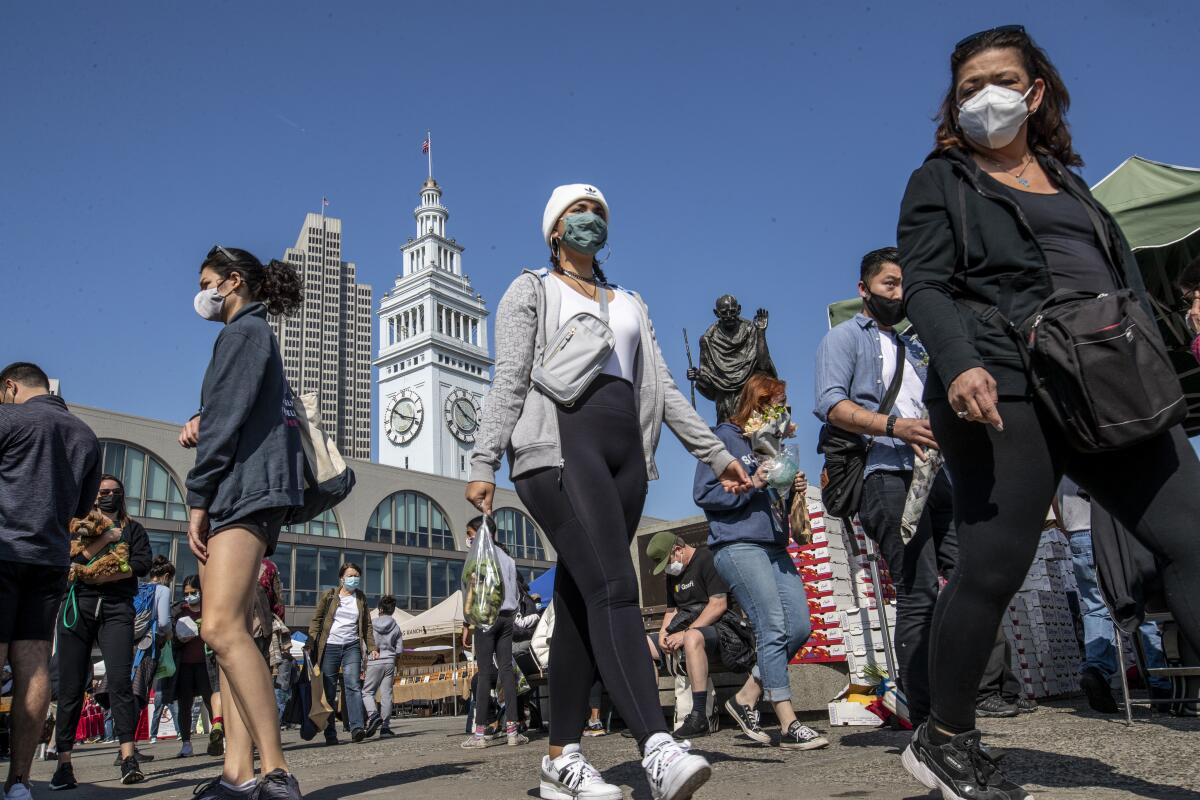
It’s not just remote work that’s hamstringing recovery. Public safety is a top concern, though data indicate violent crime has fallen over the last decade and is below that of cities of similar size. The fentanyl crisis has hit the city especially hard, prompting Gov. Gavin Newsom to call in the California National Guard and the California Highway Patrol to help San Francisco police and prosecutors target traffickers.
Tourism, particularly international tourism, has not returned to pre-pandemic levels, although visitor spending more than doubled in 2022 from the prior year. Business owners find hope in the city’s conventions schedule, with events like the DreamForce tech gathering and the Game Developers Conference back on the calendar for the first time since 2019.
Freddie Thomas has been working in the Russ Building’s lobby security for more than 15 years through many of the city’s previous economic somersaults. “The businesses that are here, they are tenacious,” he said. “That’s what I admire about San Francisco. We will find a way to build these businesses back.”
The community benefit district Downtown SF Partnership is organizing events, including light shows, to transform downtown from a commuter’s town to a destination. Future Bars Group, a hospitality group with 14 businesses in San Francisco, is expanding its footprint. “All of the things that make San Francisco are still there,” Brian Sheehy, Future’s chief executive, said. “It’s just some housekeeping we have to deal with.”
Back at Le Regency deli, Demescha King, a legal assistant in a nearby office, called over the counter to the owner, Ayanian. “I said I hope they’re still open, because I’m coming here to get a sandwich,” she said. Her office, which now requires in-person work three days per week, often catered lunches from Le Regency.
Ayanian said he had good business day, but he has learned to temper his expectations. “I used to get excited,” he said, adding that one day a week isn’t enough. By 2 p.m., Le Regency was closed.
More to Read
Start your day right
Sign up for Essential California for news, features and recommendations from the L.A. Times and beyond in your inbox six days a week.
You may occasionally receive promotional content from the Los Angeles Times.
